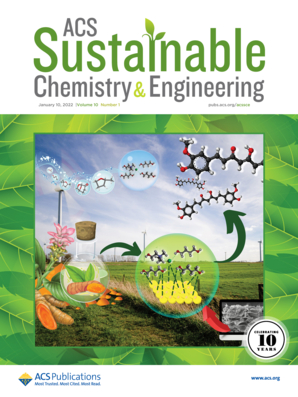Self-aggregation of the Interfacial Passivation Layer from Ionic Additive-Stabilized PbI2 Film for High-Performance Perovskite Solar Cells
IF 7.1
1区 化学
Q1 CHEMISTRY, MULTIDISCIPLINARY
引用次数: 0
Abstract
Lead halide perovskites (LHPs) face challenges in commercialization due to the instability of their thin films during the fabrication process. During the continuous spin-coating process of formamidinium/methylammonium (FA+/MA+) organic ammonium salts, the degradation and densification of the lead iodide (PbI2) layer frequently result in incomplete conversion of the perovskite, which severely impacts the performance of perovskite solar cells. In this work, we introduced the organic ion compound tetrabutylammonium hexafluorophosphate (TBAPF6) into the PbI2 precursor solution. TBAPF6 promotes the pre-expansion of the PbI2 layer, resulting in a uniform nanoporous morphology on the surface of the PbI2 film. The adsorption interaction between TBAPF6 and lead iodide stabilizes the morphology of the lead iodide film, thereby extending its storage time and further delaying the crystallization rate of the perovskite. The TBA+ cations can react with excess lead iodide to form two-dimensional perovskites, thereby enhancing the stability of the perovskite layers. Additionally, TBAPF6, as an ionic compound, can spontaneously diffuse into the buried interfaces of the perovskite to form an interfacial passivation layer. The power conversion efficiency of perovskite devices based on TBAPF6 was ultimately improved from 21.53% to 24.62%. Furthermore, these devices exhibit excellent environmental and operational stability.

求助全文
约1分钟内获得全文
求助全文
来源期刊

ACS Sustainable Chemistry & Engineering
CHEMISTRY, MULTIDISCIPLINARY-ENGINEERING, CHEMICAL
CiteScore
13.80
自引率
4.80%
发文量
1470
审稿时长
1.7 months
期刊介绍:
ACS Sustainable Chemistry & Engineering is a prestigious weekly peer-reviewed scientific journal published by the American Chemical Society. Dedicated to advancing the principles of green chemistry and green engineering, it covers a wide array of research topics including green chemistry, green engineering, biomass, alternative energy, and life cycle assessment.
The journal welcomes submissions in various formats, including Letters, Articles, Features, and Perspectives (Reviews), that address the challenges of sustainability in the chemical enterprise and contribute to the advancement of sustainable practices. Join us in shaping the future of sustainable chemistry and engineering.
 求助内容:
求助内容: 应助结果提醒方式:
应助结果提醒方式:


